Why is E-commerce Website Design Crucial for Your Business?

In today’s world, where technology and the internet are an integral part of daily life, an online presence is an undeniable necessity for every business, from small shops to large international brands.
E-commerce website design is no longer a luxury option, but rather the backbone of #digital_marketing and a vital bridge for direct and unmediated communication with potential customers worldwide.
When customers are looking for a product or service, the first thing they do is search online.
If your business does not have a strong online presence and does not offer an efficient online store, it will practically go unnoticed in today’s world, and you will miss countless opportunities.
An e-commerce website allows you to display and sell your products 24/7 without geographical and time limitations.
This constant access not only provides unparalleled convenience for customers – who can shop anytime, anywhere – but also significantly increases your sales potential and profitability.
In fact, e-commerce website design gives you the unique opportunity to expand your target market beyond the physical boundaries of your store and reach customers you could never access through traditional means.
This is especially strategically important for small and medium-sized enterprises (SMEs) that are looking for #competitiveness with larger companies and have limited resources.
Creating an online sales platform not only reduces operational costs related to rent, staff salaries, and physical maintenance in the long run, but also enables the collection and precise analysis of customer data (such as purchasing behavior, popular products, peak traffic hours) and continuous optimization of sales and marketing strategies.
This data-driven approach ensures smarter and more targeted decisions for the sustainable growth of your business.
Additionally, an e-commerce site enhances your brand’s credibility and professionalism and allows you to tell your brand story in a more engaging way.
Ultimately, in the digital age, investing in e-commerce website design is not just a tactical move, but a strategic and essential investment in the future and survival of your business.
Did you know that 94% of a company’s first impression is related to its website design?
Rasaweb helps you create the best first impression by providing professional corporate website design services.
✅ Create a professional and reliable image for your brand
✅ Easier attraction of potential customers and improvement of online standing
⚡ Get free corporate website design consultation
Key Elements of a Successful E-commerce Website
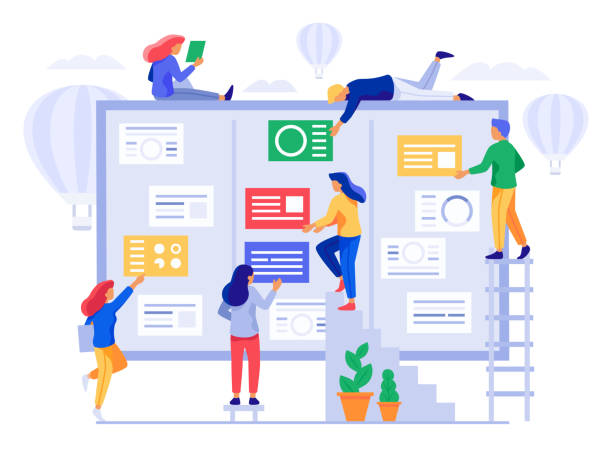
For an e-commerce website to be truly successful and effectively attract customers and encourage purchases, it must include several key and essential elements that go beyond simply placing products on a web page.
The first and most important element is a smooth and intuitive user experience (UX) and an attractive user interface (UI).
A site must have easy navigation, a clean and modern design, and fast loading speed; nothing drives users away as much as a slow or complicated site.
Customers should not be confused when looking for their desired product, adding it to the cart, or completing the payment process.
High-quality, multi-angle product images along with detailed, comprehensive, and convincing descriptions are of high importance; since customers cannot touch the product, they must obtain complete information visually and textually.
A detailed “Frequently Asked Questions” (FAQ) section, clear return policies, and contact information also build customer trust and resolve ambiguities.
The second important element is a strong and efficient content management system (CMS) for easy management of products, orders, customers, and inventory.
This system should easily provide capabilities such as adding, editing, and deleting products individually or in groups, real-time inventory tracking, order status management, and comprehensive reporting of sales and customer behavior.
The third element is secure and diverse payment options.
Today’s customers expect to be able to pay through various methods such as bank cards (Shetab), online payment gateways (Zarinpal, NextPay, etc.), and even cash on delivery or installment options.
Most importantly, they must be completely sure of the security of their transactions; SSL certificates for data encryption and strong security protocols to protect financial data are essential.
Finally, search engine optimization (SEO) capability and full mobile responsiveness are of vital importance.
Given that most internet traffic comes from mobile devices, e-commerce website design must be such that it displays well and flawlessly on all screen sizes (mobile, tablet, desktop).
In summary, focusing on these key elements helps you have an efficient, attractive, and ultimately profitable e-commerce website design that provides an enjoyable and hassle-free shopping experience for users and turns them into loyal customers.
Choosing the Right Platform for E-commerce Website Design
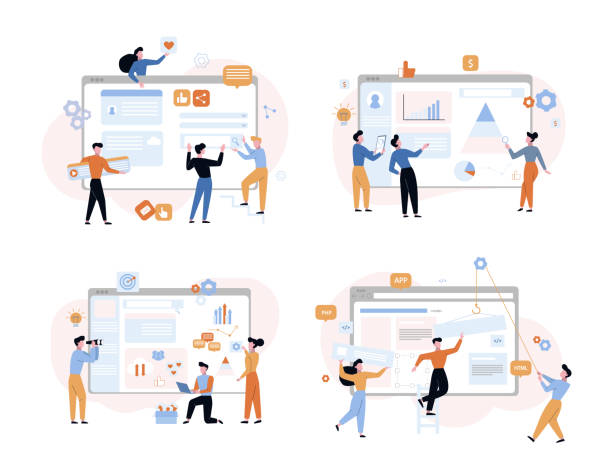
Choosing the right platform is one of the most important and influential decisions in the e-commerce website design process, which can significantly impact your business’s long-term success, costs, and flexibility.
Several options are available in the market, each with its own advantages and disadvantages.
Open-source platforms like WooCommerce, which is a plugin for WordPress, offer high flexibility and extensive customization options, but require more technical knowledge for setup and maintenance.
In contrast, SaaS (Software as a Service) platforms like Shopify, with a simpler user interface, handle hosting and security, but may have limitations in customization or monthly payments.
Also, custom-coded solutions are suitable for very large businesses with unique needs, but have much higher development and maintenance costs.
To choose the best option, you should carefully consider factors such as initial and ongoing budget, future scalability needs (do you expect rapid growth?), the technical knowledge level of your team, and specific features you require for your store (such as integration with existing systems or industry-specific features).
A thorough review of each platform’s capabilities in product management, SEO, payment options, reporting and analytics, and technical support is essential before making any decision.
Some platforms are inherently better optimized for specific types of products or a high volume of products.
Ultimately, the right platform choice provides a solid foundation for an efficient and successful e-commerce website design that can contribute to your business’s sustainable growth and profitability in the long run.
This choice should be made with a long-term view of your business goals and strategies to ensure that the chosen platform can grow and adapt to future needs, protecting your investment.
Comparison of Popular E-commerce Website Design Platforms
| Feature | WooCommerce (WordPress) | Shopify | Custom Coding |
|---|---|---|---|
| Ease of Use | Medium (requires WordPress knowledge) | High (simple user interface) | Low (requires developer) |
| Initial Cost | Low to Medium (hosting, theme, plugins) | Medium (monthly subscription) | High (development cost) |
| Flexibility and Customization | High (with plugins and coding) | Medium (limited to themes and apps) | Very High (fully controllable) |
| Maintenance and Security | User’s responsibility (requires updates) | Platform’s responsibility (automatic updates) | User/development team’s responsibility |
| Scalability | High (with suitable hosting) | High | High (depends on architecture) |
Attractive UI/UX Design for Increased Sales
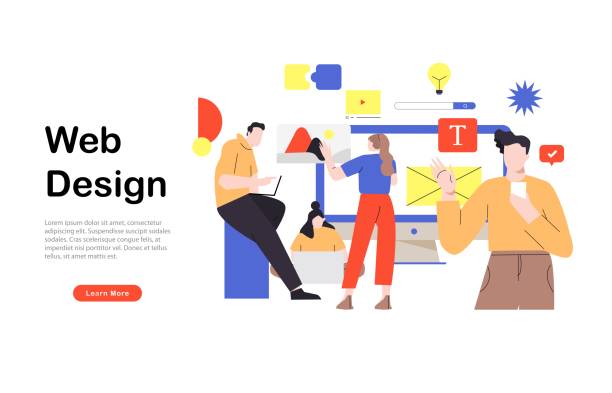
UI/UX design (User Interface/User Experience) is not just limited to the visual aesthetics of an e-commerce website; it is the backbone of its success in attracting and retaining customers and converting them into loyal buyers.
An attractive UI and a flawless UX intuitively guide users from the moment they land on the site to the completion of the purchase process, significantly increasing their likelihood of returning.
The user interface (UI) includes all visual elements the user interacts with: from color and font selection to button and image layout.
These elements must be consistent, visually appealing, and aligned with your brand identity.
Intelligent use of white space, clear visual hierarchy, and strategic use of colors to draw attention to important calls to action (such as “Add to Cart”) are crucial.
On the other hand, user experience (UX) refers to the overall feeling and ease of use a user has when interacting with your site.
Is site navigation easy? Is the payment process not complicated? Does the site load quickly? Strong UX means the least possible friction for the user.
This includes Mobile-First Design, which ensures the site displays well and flawlessly on all devices, as well as the implementation of advanced product search, effective filtering systems, clear and complete product information display, and most importantly, a simple, fast, and secure payment process.
Adding customer reviews and ratings to products also increases trust and aids decision-making.
The smoother and more enjoyable the user experience, the more likely users are to spend more time on your site and become loyal customers.
Investing in professional UI/UX design ultimately leads to a significant increase in conversion rates, a reduction in shopping cart abandonment rates, and sustainable growth for your business.
An e-commerce website design that pays special attention to UI/UX details will make a significant difference in the performance and profitability of your online store.
Are your e-commerce website visitors leaving before making a purchase? Don’t worry anymore! With Rasaweb’s professional e-commerce website design services, solve the problem of not converting visitors into customers forever!
✅ Significant increase in conversion rates and sales
✅ Unparalleled and engaging user experience
⚡ Contact us now for a free consultation!
Security and Online Payments in E-commerce Website Design

Security is one of the most critical and sensitive aspects of e-commerce website design that should never be overlooked.
Customers need a high level of trust and confidence to conduct financial transactions and enter their personal and banking information on an online store.
The first and most fundamental step to ensure security is to use an SSL (Secure Sockets Layer) certificate.
This certificate encrypts information exchanged between the user’s browser and the website server, preventing data interception, theft, or manipulation by third parties.
The presence of SSL is indicated by “https://” and a green padlock icon in the browser’s address bar, showing users that the site is secure and trustworthy.
In addition to SSL, choosing reputable and well-known online payment gateways is also of high importance.
These gateways are responsible for securely processing transactions and must comply with international security standards such as PCI DSS (Payment Card Industry Data Security Standard) and Shaparak requirements in Iran.
Providing diverse and secure payment options such as Shetab cards through reputable bank payment gateways, digital wallet payments, or even options like cash on delivery, not only provides more convenience for the customer but also strengthens their sense of trust and security.
Protecting customers’ personal data, including names, addresses, phone numbers, and contact information, is also of particular importance and must be done in strict compliance with privacy laws and data protection regulations (such as GDPR, if applicable to international audiences).
Implementing strong firewalls, intrusion detection systems (IDS), regular updates of all systems, platforms, themes, and plugins, and performing regular and automatic backups of all data and databases, all significantly contribute to the overall security of the e-commerce website.
Ignoring even one of these security aspects can lead to loss of customer trust, hacking of sensitive information, heavy legal penalties, and irreparable damage to your brand’s reputation and standing.
Therefore, in the e-commerce website design process, allocating sufficient resources for implementing and maintaining security measures is an essential investment, not an additional cost, that guarantees the sustainability of your business.
Product and Catalog Management in Online Store
![]()
Effective product and catalog management is one of the main and challenging tasks in setting up and maintaining a successful e-commerce website.
The way products are displayed, organized, and how their information is presented directly impacts user experience, customer purchasing decisions, and ultimately your sales.
An efficient product management system (which is part of the site’s CMS) should provide capabilities such as easy adding and editing of products (even in bulk), precise and multi-level categorization, the ability to add various attributes (such as color, size, material, model), and accurate inventory management.
Each product should have high-quality images from different angles, zoom capability, and even product videos.
Additionally, comprehensive, engaging, and convincing product descriptions, along with complete technical specifications and usage benefits, are crucial for helping customers make decisions.
Writing SEO-friendly product descriptions containing relevant keywords significantly helps improve your site’s ranking in search engines.
Organizing products into logical and intuitive categories and subcategories, along with advanced filtering based on price, brand, features, and customer reviews, helps users quickly and without confusion find their desired product.
An Inventory Management System is also highly crucial for preventing the sale of out-of-stock products and automatically notifying customers when stock runs out or when products are restocked.
The ability to add customer reviews and ratings to products not only contributes to transparency and trust but also aids in SEO.
Furthermore, implementing related product suggestion features (Upselling and Cross-selling) based on purchase history or products viewed by the user can help increase the average cart value.
An e-commerce website design focusing on efficient catalog management not only makes the process of adding and updating products easier for you as a store manager but also improves the shopping experience for customers and guides them toward an informed and enjoyable purchase.
This directly leads to increased sales, customer satisfaction, and loyalty.
SEO Strategies for Increased E-commerce Website Visibility
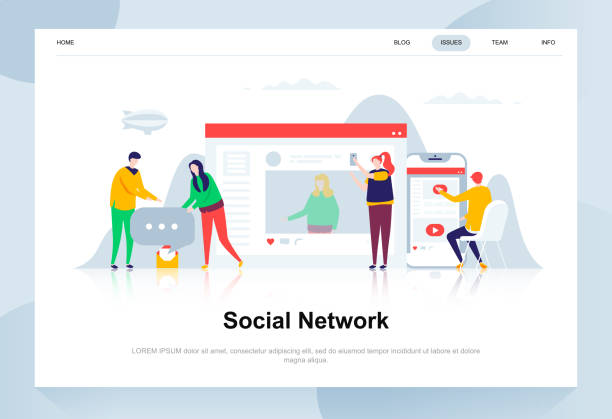
Search Engine Optimization (SEO) is one of the most important and effective strategies for success in e-commerce website design.
Without proper SEO, even the best products and most beautiful website design may go unnoticed among a multitude of competitors and fail to attract the necessary traffic.
The main goal of SEO is to increase your site’s ranking in Google search results pages and other search engines for keywords relevant to your products and services.
This leads to directing organic (free) and highly targeted traffic to your store, which has a higher conversion rate.
The first vital step is comprehensive keyword research; you need to find words that your potential customers use to search for similar products, and also consider long-tail keywords.
Then, these keywords should be strategically and naturally used in all relevant sections of your site: from page titles and meta descriptions to comprehensive and engaging product descriptions, category descriptions, friendly URLs, and even image file names (Alt Text).
Technical SEO is also highly important, which includes ensuring high site loading speed, full mobile compatibility (Mobile-First Indexing), simple and understandable URL structures, correct use of sitemaps (XML Sitemap) to aid search engine crawling, and fixing 404 errors or broken links.
Creating high-quality, unique, and valuable content (such as specialized blog articles, comprehensive buying guides, product reviews, or product comparisons) that contains relevant keywords not only helps with SEO but also provides added value to users and builds their trust.
Link building, by obtaining high-quality and natural backlinks from reputable and relevant sites, also increases your domain authority in the eyes of search engines.
Regular monitoring of SEO performance with tools like Google Analytics and Google Search Console is crucial for identifying opportunities, tracking competitors, and resolving potential issues.
E-commerce website design should be carried out with an SEO-friendly approach from the very beginning to provide a strong foundation for your online visibility and to make subsequent investments in digital marketing more effective, leading to sustainable growth and long-term profitability.
Essential SEO Checklist for Online Store
| SEO Action | Short Description | Importance |
|---|---|---|
| Keyword Research | Identifying phrases customers search for. | Very High |
| Title and Meta Description Optimization | Attracting more clicks from search results. | High |
| Image Optimization (Alt Text, Compression) | Helping faster loading and visibility in image search. | Medium |
| Site Loading Speed | Google ranking factor and user experience. | Very High |
| Responsive Design (Mobile-Friendly) | Essential for Google’s mobile-first ranking. | Very High |
| Creating Quality Content (Blog, Guides) | Increasing credibility and attracting organic traffic. | High |
| SSL and Website Security | Essential for trust and ranking. | Critical |
Marketing and Promotion After E-commerce Website Design
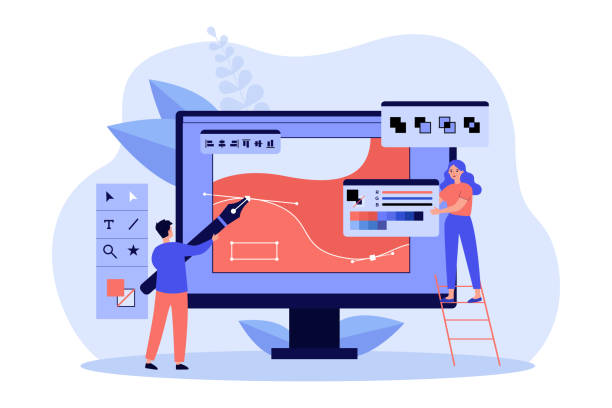
After the successful completion of the e-commerce website design process and its official launch, your work has just begun, and this initial step is only the start.
An e-commerce website, however beautiful and user-friendly, without a strong and continuous marketing strategy, is like a luxury store in a remote and unknown location.
To attract customers, build brand awareness, and sustainably increase sales, you must actively and purposefully promote your online store.
Digital marketing encompasses a wide range of tactics and channels.
PPC (Pay-Per-Click) advertising on platforms like Google Ads (Google Ads) for display in search results, or social media advertising (such as Instagram and Facebook) can drive targeted and fast traffic to your site and is very effective for short-term sales campaigns.
Content marketing through producing valuable blog articles, product tutorial videos, industry-related infographics, or comprehensive buying guides not only helps with SEO but also enhances your brand’s credibility and attracts potential customers at various stages of the sales funnel.
Social media marketing is highly effective for direct interaction with audiences, building a community of loyal followers, and introducing new products in an engaging and visual manner.
You can also use influencer marketing campaigns to reach wider audiences and build trust through recommendations from credible individuals.
Email marketing is also an incredibly powerful tool with high ROI (Return on Investment) for informing existing and potential customers about discounts, new products, abandoned shopping carts, and store news.
Analyzing marketing data (with tools like Google Analytics) is crucial for identifying successful campaigns, weaknesses, and continuously optimizing future strategies.
Consistency and coordination in executing various marketing strategies are key to the long-term success of your e-commerce website.
Without a comprehensive and well-executed marketing plan, even the best e-commerce website design cannot realize its full potential and achieve your business’s sales and growth goals.
Are you tired of losing business opportunities due to not having a professional corporate website?
Rasaweb helps you with professional corporate website design:
✅ Build a powerful and reliable brand image
✅ Convert website visitors into loyal customers
⚡ Get a free consultation now!
Maintenance and Development of E-commerce Website Over Time

E-commerce website design is only the first step on the path to having a successful online business; in fact, continuous maintenance and development of the site are crucial to ensure smooth operation, stable security, and its growth over time.
Regular updates of platform software (such as WordPress/WooCommerce core, Shopify, or other CMSs), themes, and plugins not only help maintain security against vulnerabilities and cyber attacks but also provide access to new features, improved performance, and compatibility with web standards.
These updates should be performed carefully and after necessary testing to avoid interfering with site functionality.
Continuous monitoring of site performance, including page loading speed, 404 error rates, server response time, and database performance, is essential to ensure an optimal user experience and maintain SEO ranking.
Small technical issues can evolve into larger problems over time and negatively impact SEO ranking, customer satisfaction, and ultimately sales.
Regular and automatic backups of all data and the site’s database are also a vital security measure that, in case of any serious issue, hacking, or data loss, allows for quick and complete site recovery and prevents the loss of your valuable assets and data.
In addition to maintenance, continuous development and improvement of the site are also necessary to remain competitive in the dynamic online market.
This includes adding new and attractive features based on customer feedback and market trends (such as new payment options, advanced filtering, online chat, personalization features), optimizing the checkout process to reduce cart abandonment rates, continuously improving UI/UX, and synchronizing with emerging technologies.
Analyzing sales data, website traffic, and user behavior (such as navigation path, most visited pages, conversion rates at each stage) can provide valuable insights for decision-making regarding future updates and improvements to your e-commerce website.
Investing in maintenance and development ensures that your e-commerce website design always remains up-to-date, secure, and efficient, and can best meet the changing needs of the market and customers, supporting the sustainable growth of your business.
The Future of E-commerce Website Design and Upcoming Trends
![]()
The future of e-commerce website design is rapidly evolving, and with tremendous technological advancements, the boundaries of the online shopping experience are constantly shifting and expanding.
One of the significant and exciting trends is Augmented Reality (AR) and Virtual Reality (VR) experience.
Imagine customers being able to virtually try on clothes, see furniture in their homes before purchasing, or even view and select products in a 3D virtual store.
These technologies have the potential to bridge the gap between online and physical shopping and can offer a more immersive, interactive, and engaging shopping experience.
Artificial Intelligence (AI) and Machine Learning (ML) will also play an increasing role in personalizing and optimizing the shopping experience.
From intelligent and advanced chatbots for 24/7 customer support to smart recommendation engines that suggest products based on purchase history, user preferences, and even observed behaviors on the site, AI can highly personalize the shopping experience and increase sales efficiency.
Voice search and Voice Commerce are also growing with the increasing use of voice assistants like Google Assistant and Siri, which highlights the need to optimize sites for conversational searches and the ability to purchase by voice.
More extensive personalization, from product suggestions to site content and even dynamic pricing based on user behavior, is also a key future trend.
An increased focus on sustainability, ethical production, and corporate social responsibility can also impact e-commerce website design, with brands providing more transparent information about their supply chain, raw materials, and environmental impacts to gain the trust of conscious customers.
These trends indicate that the future of online stores will be much more interactive, intelligent, and personalized.
Are businesses ready for these transformations? Can they keep pace with technological changes and adapt their e-commerce website design to remain competitive and even be leaders in this environment? The main challenge in the future is not just the mere implementation of these technologies, but their intelligent integration in a way that truly improves the customer experience and leads to long-term loyalty, not just a display of technology.
Frequently Asked Questions
| Question | Answer |
|---|---|
| What is e-commerce website design? | The process of creating a website that allows for displaying products or services, adding them to a shopping cart, and conducting online transactions. |
| Why do we need an e-commerce website? | 24/7 access to customers, increased geographical sales reach, reduced operational costs compared to a physical store, and the ability to analyze customer behavior. |
| What features are important in e-commerce website design? | User-friendly and attractive appearance, product categorization, shopping cart, secure payment gateway, search functionality, customer review section, and inventory management. |
| How much does e-commerce website design cost? | It varies depending on complexity, requested features, custom design or use of ready-made templates, and the company you choose. |
| What platforms are available for e-commerce website design? | Content Management Systems (CMS) such as WooCommerce (on WordPress) and PrestaShop, or proprietary and cloud platforms like Shopify (international) and Sazito (Iranian). |
And other advertising services from Rasaweb Advertising Agency
Smart SEO: Professional optimization for campaign management using intelligent data analysis.
Smart Social Media: An effective tool for user engagement with the help of Google Ads management.
Smart Marketplace: An effective tool for increasing sales with the help of real data.
Smart Content Strategy: Revolutionize click-through rates with the help of attractive UI design.
Smart Advertising Campaign: A new service for increasing click-through rates through SEO-driven content strategy.
And over hundreds of other services in the field of internet advertising, advertising consultation, and organizational solutions
Internet Advertising | Advertising Strategy | Sponsored Articles
Resources
E-commerce Website Design Guide
How to Create an Online Store
E-commerce Marketing Strategies
E-commerce UI/UX Design
? Are you ready to transform your business in the digital world? Rasaweb Digital Marketing Agency, with expertise in website design with a modern user interface and comprehensive digital strategies, is your smart solution for growth and visibility.
📍 Tehran, Mirdamad Street, next to Central Bank, Kazeroun Jonoubi Alley, Ramin Alley, No. 6
